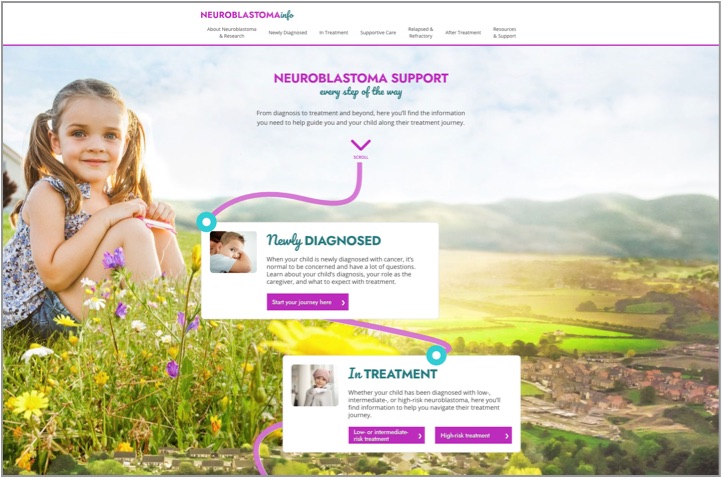CONTRAINDICATIONS
Patients who are allergic to dinutuximab should not take Unituxin.
WARNINGS AND PRECAUTIONS
Serious Infusion Reactions
-
In a clinical study, 35 (26%) patients taking Unituxin experienced severe (Grade 3 or 4)
infusion reactions. Serious infusion reactions included swelling of the face and upper airway,
difficult or abnormal breathing, bronchospasm, rash and hives, and low blood pressure. Urgent
intervention included blood pressure support, bronchodilator therapy, corticosteroids, infusion
rate reduction, infusion interruption, or permanent discontinuation of Unituxin.
-
Infusion reactions generally happen during or within 24 hours after treatment with Unituxin.
Tell your healthcare professional right away if you notice any signs or symptoms of serious
infusion reactions, including facial or lip swelling, rash, difficulty breathing,
lightheadedness, or dizziness, that occur during or within 24 hours following infusion. Your
healthcare professional will decide whether treatment should be stopped temporarily or
permanently.
Neurotoxicity
-
Pain:
-
Your healthcare professional will administer medication before, during, and after
treatment to help manage pain. Tell your healthcare professional right away about any
severe or worsening pain.
-
In a clinical study, 114 (85%) patients taking Unituxin experienced pain despite
pre-treatment with pain medicine including morphine sulfate infusion. Severe (Grade 3)
pain occurred in 68 (51%) patients taking Unituxin compared to 5 (5%) patients who were
not taking Unituxin. Pain typically occurred during the Unituxin infusion and was most
commonly reported as stomach pain, generalized pain, pain in the arms or legs, back
pain, nerve pain, muscle and bone pain of the chest, and joint pain.
-
If severe pain is experienced, your healthcare professional may reduce the speed at
which Unituxin is given. Unituxin may be stopped if pain is not adequately controlled
through medical intervention.
-
Peripheral Neuropathy:
-
Symptoms of neuropathy (may include numbness, tingling, burning), or weakness. Report
any signs or symptoms of neuropathy immediately to your healthcare provider.
-
In a clinical study, severe (Grade 3) peripheral sensory neuropathy occurred in 2 (1%)
patients and severe peripheral motor neuropathy occurred in 2 (1%) patients taking
Unituxin compared to zero patients who were not taking Unituxin.
-
Treatment with Unituxin may need to be permanently discontinued in patients with Grade 2
peripheral motor neuropathy, Grade 3 sensory neuropathy that interferes with daily
activities for more than 2 weeks, or Grade 4 sensory neuropathy.
-
Neurological Disorders of the Eye:
-
Neurological disorders of the eye can be serious. Tell your healthcare professional
immediately if you experience blurred vision, sensitivity to light, drooping of the
upper eyelid, double vision, optic disc swelling, or fixed or unequal pupil size as
these can be signs and symptoms of a neurological disorder of the eye. Patients who
experience neurological disorders of the eye may need to have the Unituxin dose reduced
or permanently stopped.
-
In clinical studies, neurological disorders of the eye experienced by 2 or more patients
treated with Unituxin included blurred vision, sensitivity to light, dilated pupils, an
inability to move the eyelid, fixed or unequal pupils, optic nerve disorder, drooping of
the eyelid, and swelling.
-
Prolonged Urinary Retention:
-
Urinary retention (inability to completely empty the bladder) that persists for weeks to
months after stopping opioids has occurred in patients treated with Unituxin. Report to
your healthcare provider persistent urinary retention that does not resolve after having
stopped opioid therapy. If you experience prolonged urinary retention, your healthcare
professional will decide whether treatment should be stopped.
-
Transverse Myelitis:
-
Transverse myelitis has occurred in patients treated with Unituxin. Symptoms may include
weakness, tingling or burning sensation, reduced sensation, or inability to control
urine. Report signs or symptoms of transverse myelitis immediately to your healthcare
provider. Your healthcare professional will determine if you have transverse myelitis
and stop treatment as necessary.
-
Reversible Posterior Leukoencephalopathy Syndrome (RPLS):
-
RPLS is swelling in the back part of the brain. It has occurred in patients treated with
Unituxin. Symptoms may include severe headache, high blood pressure, change in vision,
feeling drowsy or tired, or seizures (fits). Report signs or symptoms immediately to
your healthcare provider. Unituxin may be stopped in patients with signs and symptoms of
RPLS.
Capillary Leak Syndrome
-
Capillary leak syndrome is a potentially life-threatening condition in which fluid and proteins
leak out of tiny blood vessels and flow into surrounding tissue. This leads to dangerously low
blood pressure. If severe capillary leak syndrome is experienced, the speed at which Unituxin is
given may need to be interrupted, reduced, or permanently stopped.
-
Signs and symptoms of capillary leak syndrome include swelling of the arms, legs, and other
parts of the body; shock; lightheadedness; weakness; fatigue; nausea; and rapid drop in blood
pressure. Immediately report any signs or symptoms of capillary leak syndrome to your healthcare
professional.
-
In a clinical study, severe (Grades 3 to 5) capillary leak syndrome occurred in 31 (23%)
patients taking Unituxin and in no patients who were not taking Unituxin.
Low Blood Pressure
-
In a clinical study, 22 (16%) patients taking Unituxin experienced severe (Grade 3 or 4) low
blood pressure. Fluids will be given by your healthcare professional prior to treatment with
Unituxin. Blood pressure should be watched closely during Unituxin treatment. Tell your
healthcare professional right away if you experience any changes in breathing, dizziness or
lightheadedness, fainting, or dehydration (symptoms may include unusual thirst, urinating less
often than usual, dark colored urine, dry skin, or tiredness). Patients who get low blood
pressure may need to have the speed at which Unituxin is given reduced or permanently stopped.
Infection
-
In a clinical study, 17 (13%) patients experienced severe (Grade 3 or 4) bacteremia that
required urgent intervention, and 24 (18%) patients experienced sepsis. Closely monitor for
signs and symptoms of systemic infection such as fever or tiredness. Tell your healthcare
professional if you notice any signs of an infection.
-
Patients who develop systemic infection will need to temporarily stop treatment with Unituxin
until the infection resolves.
Bone Marrow Suppression
-
Patients taking Unituxin may have slow blood clotting. This is due to a lowering of the number
of platelets in the blood. Unituxin may also cause low red blood cell count (anemia) and low
white blood cell count. This may make patients more likely to develop an infection.
-
In a clinical study, severe (Grade 3 or 4) platelet deficiency (39% vs. 25%), low red blood cell
count (34% vs. 16%), low white blood cell count (34% vs. 13%), and fever along with a low white
blood cell count (4% vs. 0 patients) occurred more commonly in patients who were taking Unituxin
than in patients who were not taking Unituxin.
Electrolyte Abnormalities
-
In a clinical study, electrolyte abnormalities occurring in at least 25% of patients who
received Unituxin included low levels of sodium, low levels of potassium, and low levels of
calcium in the bloodstream. Your healthcare professional will monitor these levels. Tell your
healthcare professional about any seizures; a feeling that the heart is beating too hard or too
fast, skipping a beat, or fluttering; or muscle cramping.
Atypical Hemolytic Uremic Syndrome
-
Patients taking Unituxin may experience kidney problems, electrolyte abnormalities, low red
blood cell count, or high blood pressure. Patients who experience these side effects may need to
permanently stop treatment with Unituxin. Tell your healthcare professional about any fatigue,
dizziness, fainting, extreme skin paleness, swelling, less urine output than normal, or blood in
the urine.
Tell your healthcare professional if you are pregnant before taking Unituxin.
-
Unituxin may cause harm to an unborn child. Women who are taking Unituxin should use effective
birth control measures during treatment and for 2 months after the last dose of Unituxin.
COMMON SERIOUS ADVERSE REACTIONS
The following is a list of the most common serious adverse reactions seen in 5% or more of patients
taking Unituxin:
- Infections
- Infusion reactions
- Low levels of potassium in the blood
- Low blood pressure
- Pain
- Fever
-
Capillary leak syndrome (a potentially life-threatening condition in which fluid and proteins
leak out of tiny blood vessels and flow into surrounding tissue, leading to dangerously low
blood pressure)
COMMON ADVERSE REACTIONS
The following is a list of the most common adverse reactions seen in 25% or more of patients taking
Unituxin:
- Pain
- Fever
- Slow blood clotting
- Reduced ability to fight infections (low levels of white blood cells of various kinds)
- Infusion reactions
- Low blood pressure
- Low levels of sodium in the blood
- Increased levels of the enzyme alanine aminotransferase in the blood
- Low red blood cell count
- Vomiting
- Diarrhea
- Low levels of potassium in the blood
- Capillary leak syndrome
- Hives
- Low levels of albumin in the blood
- Increased levels of the enzyme aspartate aminotransferase
- Low levels of calcium in the blood
The following side effects have also been observed in patients taking Unituxin after approval:
prolonged urinary retention (inability to completely empty the bladder), transverse myelitis, and
reversible posterior leukoencephalopathy (swelling in the back part of the brain).
Tell your healthcare professional about any side effect seen during treatment with Unituxin. These
are not all the possible side effects of Unituxin. For more information, talk to your healthcare
professional.
You are encouraged to report negative side effects of prescription drugs to the FDA. Visit
www.fda.gov/medwatch
or call 1-800-FDA-1088.
UTXISIdtcMAR17
Please see
Full Prescribing Information
, including Boxed WARNING, for Unituxin.








